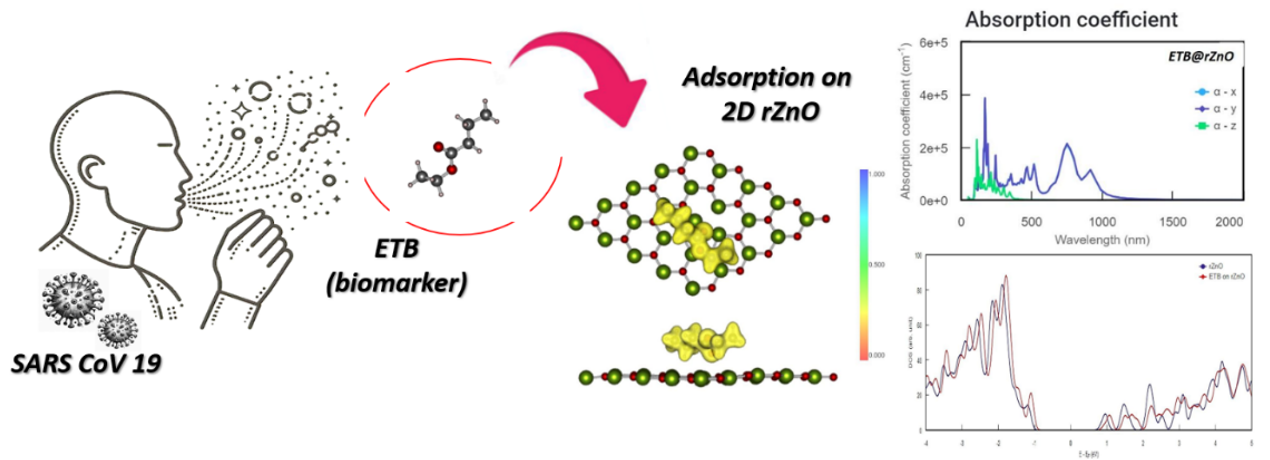Detection of SARS CoV biomarker Ethyl Butyrate on reduced 2-dimensional Zinc Oxide

DOI:
https://doi.org/10.62110/sciencein.mns.2025.V12.1187Keywords:
2D materials, DFT, ZnO, Sensor, Biomarker, SARS-CoV-2, COVID-19Abstract
In this work we study the detection of ethyl butyrate (ETB) , a prominent SARS CoV biomarker with reduced two dimensional (2D) ZnO. With density functional theory (DFT) calculations we show the adsorption of ETB on non-stoichiometric sites of 2D rZnO. It is seen that ETB adsorbs well on rZnO with a binding energy of around 0.8eV and shows significant changes in the electronic density of states and charge density of the 2D sheet upon ETB adsorption. The adsorbed ETB molecule tends to draw a small net positive charge of ~0.25eV/Bohr3 around itself. The optical properties such as dielectric function and the absorption spectra undergo detectable changes in peaks even for the adsorption of a single molecule. The optical absorption spectra shows emergence of a single peak at 780nm upon ETB adsorption compared to multiple peaks between 675-720nm for the bare 2D sheet. These significant changes can aid in rapid detection of the biomarker, by electronic or optical detection means, leading to the development of novel sensors for rapid SARS CoV detection.





